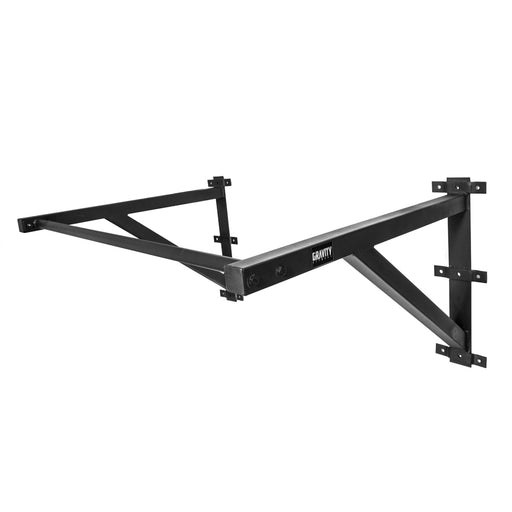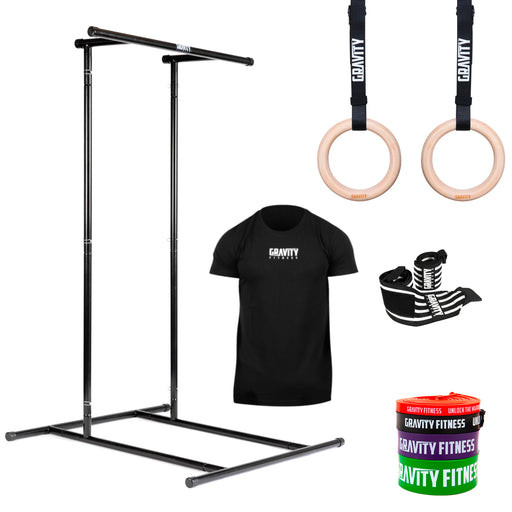
Is Calisthenics the Answer to Fitter Children?
When it comes to raising fitter, healthier children, parents are always on the lookout for engaging, effective, and sustainable physical activities. One approach gaining popularity worldwide is calisthenics. Rooted in bodyweight exercises, this discipline is not just for elite athletes or fitness enthusiasts—it’s highly adaptable and could be the perfect solution to get kids moving in a fun and functional way.
We explore the benefits of calisthenics for children and why it might be the key to helping the next generation lead healthier, more active lives.
What Is Calisthenics?
Calisthenics is a form of exercise that uses the body’s weight as resistance. Think push-ups, pull-ups, squats, and planks. Unlike activities that rely on expensive equipment or require gym memberships, calisthenics is accessible to anyone, anywhere, making it ideal for children.
Beyond its simplicity, calisthenics promotes strength, flexibility, coordination, and endurance. It lays a solid foundation for overall fitness while emphasising fun and creativity.
Can Children Do Calisthenics?
Yes! Calisthenics is not only suitable for children, but it’s also one of the most natural ways for them to exercise. From a young age, kids instinctively use calisthenics-like movements in play. Climbing trees, jumping off playground structures, and crawling through tight spaces are all forms of bodyweight training.
The beauty of calisthenics lies in its scalability. Exercises can be modified to suit different ages and skill levels. For example, a beginner version of a push-up can be done on the knees, while pull-ups can start with assistance bands. This adaptability makes it safe and inclusive, even for kids new to structured exercise.
Is Calisthenics for Kids?
Absolutely. Traditional fitness routines can sometimes feel rigid or boring for children, but calisthenics brings an element of creativity and play. Kids can transform their environment into a gym—imagine turning a park bench into a step-up station or a sturdy tree branch into a pull-up bar.
Additionally, calisthenics doesn’t pressure children into competition. Unlike organised sports where there’s often a focus on winning or outperforming peers, calisthenics emphasises personal progress and fun. This can build a healthy relationship with exercise and self-confidence from a young age.
The Benefits of Calisthenics for Children
-
Improved Physical Fitness
Calisthenics builds foundational strength, enhances flexibility, and improves cardiovascular health. These benefits translate to better performance in other sports and activities while fostering long-term health. -
Injury Prevention
By strengthening stabilising muscles and improving movement patterns, calisthenics reduces the risk of injuries. This is particularly important for kids who participate in high-impact sports like football or gymnastics. -
Mental Well-being
Exercise has been shown to boost mood and reduce stress in children. The sense of accomplishment from mastering a new move—like their first pull-up or handstand—can enhance self-esteem and resilience. -
Social Interaction
Group calisthenics sessions or outdoor workout meet ups encourage teamwork and social bonding. This can help kids develop friendships while staying active. -
Healthy Habits for Life
By incorporating fitness into their daily routine at an early age, children are more likely to maintain these habits into adulthood. Calisthenics fosters a mindset of staying active without relying on gyms or equipment.
How to Introduce Calisthenics to Kids
Starting with calisthenics doesn’t require a formal plan or professional coaching. Here are some tips for parents and guardians:
- Make It Fun: Turn exercises into games or challenges. For example, see who can hold a plank the longest or create an obstacle course with calisthenics moves.
- Focus on Basics: Start with simple exercises like squats, planks, and push-ups, gradually introducing more advanced moves as they gain confidence.
- Be Creative: Encourage kids to use playgrounds, furniture, or even walls to explore different movements.
- Involve Friends: Children are more likely to stay engaged when they exercise with peers. Organise group sessions or family workouts.
- Set Goals: Help kids set achievable milestones, like doing their first full pull-up or holding a handstand for 5 seconds. Celebrate their progress to keep them motivated.
Addressing Safety Concerns
While calisthenics is generally safe, it’s important to ensure children are exercising correctly to avoid injury. Here are some key considerations:
- Warm-Up and Cool-Down: Always include a dynamic warm-up and a gentle cool-down to prepare their bodies and prevent soreness.
- Supervision: Younger children should practice under the supervision of an adult to ensure proper form and prevent accidents.
- Pace: Avoid pushing kids too hard or expecting rapid progress. Encourage them to listen to their bodies.
- Age-Appropriate Activities: Tailor the intensity and complexity of exercises to suit their developmental stage.
Why Calisthenics Is Better Than Screen Time
In today’s digital age, children spend a significant portion of their time in front of screens. This sedentary lifestyle contributes to rising rates of childhood obesity and related health issues.
Calisthenics provides a refreshing alternative to passive screen time. It gets kids off the couch and encourages them to explore their physical potential. Moreover, it can be done indoors or outdoors, making it a versatile option for families looking to balance screen use with active play.
Inspiring Stories: Kids Who Thrive with Calisthenics
Many young calisthenics enthusiasts have taken to social media to share their progress, inspiring others to start their journey. Stories of children mastering pull-ups, muscle-ups, and handstands show that with consistency and encouragement, kids can achieve incredible feats.
These success stories highlight how calisthenics fosters not just physical fitness but also discipline, perseverance, and a sense of accomplishment.
The Role of Parents in Encouraging Active Lifestyles
Parents play a crucial role in setting an example for their children. When kids see their parents enjoying calisthenics or other forms of exercise, they’re more likely to develop a positive attitude toward fitness.
Make calisthenics a family activity. Whether it’s an outdoor workout at the park or a quick session in the living room, shared experiences can strengthen bonds while promoting health.
So should you children be doing Calisthenics?
Absolutely yes, calisthenics is more than just a workout; it’s a lifestyle that prioritises movement, creativity, and fun. For children, it offers a holistic approach to fitness that builds strength, confidence, and resilience.
As parents and guardians, embracing calisthenics can help us raise a healthier, happier generation. With its versatility, accessibility, and ability to inspire lifelong habits, calisthenics could very well be the answer to fitter children.
So why not take that first step today? Get outside, get moving, and watch your children thrive through the power of calisthenics!

































